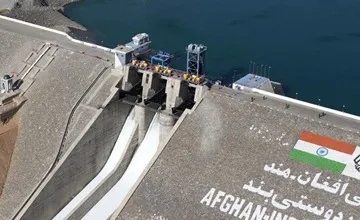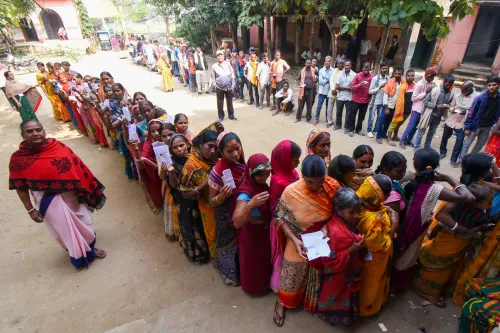How Is the Afghan-India Friendship Dam Supporting Farmers in Herat?

Synopsis
Key Takeaways
- Afghan-India Friendship Dam supports local agriculture.
- Water released into the Harirud River aids in drought relief.
- Project represents a significant partnership between India and Afghanistan.
- Dam has a storage capacity of 633 million cubic meters.
- Construction faced several security challenges.
New Delhi, Nov 11 (NationPress) The administration of Afghanistan has commenced the release of water from the Afghan-India Friendship Dam, known locally as Salma Dam, into the Harirud River this week, providing much-needed relief to farmers in Herat who are grappling with drought-like conditions, according to reports.
The dam was inaugurated on June 4, 2016, by then President Ashraf Ghani of Afghanistan and Prime Minister Narendra Modi of India, located in Chist-e-Sharif, within the Herat province of Western Afghanistan.
This multipurpose initiative is designed to generate 42 MW of power, irrigate 75,000 hectares of land, supply water, and deliver other significant benefits to the Afghan populace.
The Salma Dam possesses a storage capacity of approximately 633 million cubic meters, standing 104.3 meters tall, measuring 540 meters in length, and 450 meters wide at its base.
Executed by WAPCOS Ltd., a Government of India entity under the Ministry of Water Resources, River Development, and Ganga Rejuvenation, this major infrastructure project represents years of dedication from around 1,500 Indian and Afghan professionals, all of whom worked under challenging conditions.
Despite its completion, there have been confrontations around the dam site; about four years ago, armed militia attempted an attack under the cover of night, which was successfully thwarted by security forces. Consequently, Indian engineers and technicians were required to access the site via helicopter, a service coordinated by Kabul.
All necessary equipment and materials were shipped from India to Bander-e-Abbas port in Iran, then transported by road to the Afghan border, approximately 1,200 kilometers distant.
Once past the Islam Kila border post, the actual site was an additional 300 kilometers away by road. Other construction necessities, such as cement, reinforced steel, and explosives, were acquired from Afghanistan's neighboring countries.
The total cost of this project was approximately Rs.1,775 crore, funded by the Government of India, and it took over a decade to complete.
In a briefing at the end of October, India’s Ministry of External Affairs (MEA) emphasized its ongoing collaboration with Afghanistan regarding water management, referring to the Salma Dam as a “perfect example” of this enduring partnership.
Highlighting Afghanistan's Foreign Minister Mawlawi Amir Khan Muttaqi's visit to India earlier that month, MEA spokesperson Randhir Jaiswal noted that the joint statement confirmed India's commitment to support Afghanistan in sustainable water resource management, including hydroelectric initiatives.
Water stored in the dam is released into the Harirud River for a 20-day period to aid autumn farming in Herat, a province suffering from drought due to insufficient rainfall, creating significant challenges for farmers.
Similarly, last year, approximately at this time, water from the Salma Dam was released to assist farmers in initiating seasonal planting across eight districts along the Harirud River.
“At this season, farmers in Herat utilize this water for autumn planting. Following this period (around 20 days), the dam is closed, and the water is stored until spring, when it is released again as required,” stated Ghulam Habib Hashimi, head of the Water Users' Association in Herat, to Tolo News on Tuesday.
The seasonal release from Salma Dam is crucial for agriculture in Herat, where this water is regarded as vital for enhancing farming practices and increasing crop yields in a region frequently afflicted by drought.









